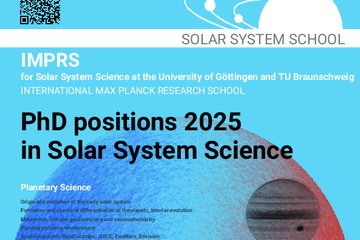All genres
61.
Journal Article
The Drivers of Active Region Outflows into the Slow Solar Wind. The Astrophysical Journal 894 (2), 144 (2020)
62.
Journal Article
Impulsive coronal heating during the interaction of surface magnetic fields in the lower solar atmosphere. Astronomy and Astrophysics 644, A130 (2020)
63.
Journal Article
Observations and modeling of the onset of fast reconnection in the solar transition region. The Astrophysical Journal 901 (2), 148 (2020)
64.
Journal Article
Relation of Coronal Rain Originating from Coronal Condensations to Interchange Magnetic Reconnection. The Astrophysical Journal 905 (1), 26 (2020)
65.
Journal Article
Non-thermal line broadening due to braiding-induced turbulence in solar coronal loops. Astronomy and Astrophysics 639, A21 (2020)
66.
Journal Article
The Solar Orbiter EUI instrument: The Extreme Ultraviolet Imager. Astronomy and Astrophysics 642, A8 (2020)
67.
Journal Article
Models and data analysis tools for the Solar Orbiter mission. Astronomy and Astrophysics 642, A2 (2020)
68.
Journal Article
Observation and Modeling of High-temperature Solar Active Region Emission during the High-resolution Coronal Imager Flight of 2018 May 29. The Astrophysical Journal 896 (1), 51 (2020)
69.
Journal Article
Evidence for and Analysis of Multiple Hidden Coronal Strands in Cross-sectional Emission Profiles: Further Results from NASA's High-resolution Solar Coronal Imager. The Astrophysical Journal 902 (2), 90 (2020)
70.
Journal Article
Is the High-Resolution Coronal Imager Resolving Coronal Strands? Results from AR 12712. The Astrophysical Journal 892 (2), 134 (2020)
71.
Journal Article
Stellar coronal X-ray emission and surface magnetic flux. Astronomy and Astrophysics 640, A119 (2020)
72.
Journal Article
The Solar Orbiter Science Activity Plan: translating solar and heliospheric physics questions into action. Astronomy and Astrophysics 642, A3 (2020)
73.
Journal Article
Investigating the Transition Region Explosive Events and Their Relationship to Network Jets. Astrophysical Journal 873 (1), 79 (2019)
74.
Journal Article
Flame-like Ellerman Bombs and Their Connection to Solar Ultraviolet Bursts. The Astrophysical Journal Letters 875 (2), L30 (2019)
75.
Journal Article
Hot prominence spicules launched from turbulent cool solar prominences. Astronomy and Astrophysics 627, L5 (2019)
76.
Journal Article
Energetics of magnetic transients in a solar active region plage. Astronomy and Astrophysics 623, A176 (2019)
77.
Journal Article
Effects of Coronal Density and Magnetic Field Distributions on a Global Solar EUV Wave. The Astrophysical Journal 878 (2), 106 (2019)
78.
Journal Article
Plasma injection into a solar coronal loop. Astronomy and Astrophysics 626, A98 (2019)
79.
Journal Article
Repeated Coronal Condensations Caused by Magnetic Reconnection between Solar Coronal Loops. The Astrophysical Journal 884 (1), 34 (2019)
80.
Journal Article
Hi-C 2.1 Observations of Jetlet-like Events at Edges of Solar Magnetic Network Lanes. Astrophysical Journal, Letters 887 (1), L8 (2019)











